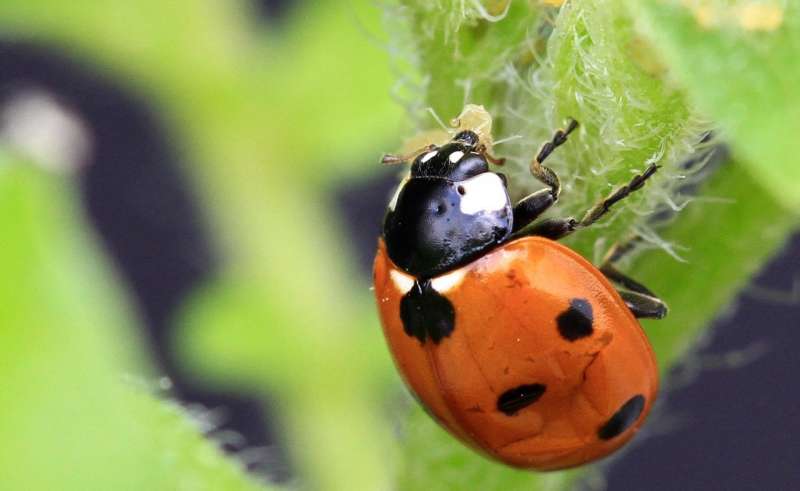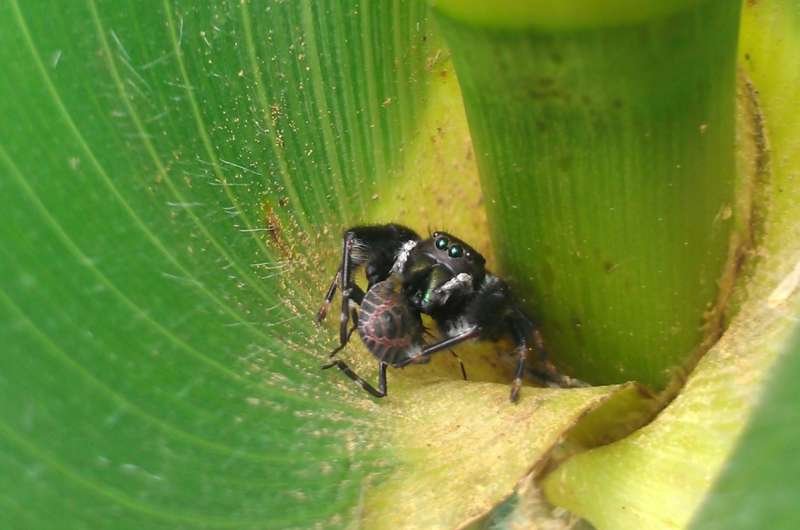Natural habitat can help farmers control pests, but not always a win-win

Songbirds and coffee farms in Central America. Ladybugs and soybean fields in the Midwest. These are well-known, win-win stories of how conserving natural habitat can benefit farmers.
But an international team of authors led by the University of California, Davis, found that natural habitat surrounding farm fields is not always an effective pest-control tool for farmers worldwide. Their analysis is published July 30 in the journal PNAS.
"There's a widespread assumption among ecologists that when you have more natural habitat around farm fields you get more enemies of the crop pests, and that these enemies will control the pests and provide a benefit to growers," said lead author Daniel Karp, an assistant professor in the UC Davis Department of Wildlife, Fish and Conservation Biology.
To test that assumption, Karp and Rebecca Chaplin-Kramer of the Natural Capital Project at Stanford University organized an international team of ecologists, economists, and practitioners at the National Socio-Environmental Synthesis Center. Together, they compiled the largest pest-control dataset of its kind, encompassing 132 studies from more than 6,700 sites in 31 countries worldwide—from California farmlands to tropical cacao plantations and European wheat fields.

Not one-size-fits-all
Surprisingly, the results were highly variable across the globe. While many of the studies showed surrounding natural habitat does indeed help farmers control pests, just as many showed negative effects on crop yields. The analysis indicates that there are no one-size-fits-all recommendations for growers about natural habitat and pests.
"This paper isn't telling farmers to clear habitat by any means," Karp said. "There may be a lot of other benefits from natural habitat, such as pollination or carbon sequestration. But we need to be forthright about knowing when habitat conservation will be advantageous in terms of pests and when other means of pest control are needed."
Critically, Karp and his team of 153 co-authors have made their pest-control database publicly available, opening the door for further scientific insights. Karp hopes the database will grow over time and help inform predictive models about when surrounding habitat helps control pests and when it does not.
More information: Daniel S. Karp el al., "Crop pests and predators exhibit inconsistent responses to surrounding landscape composition," PNAS (2018). www.pnas.org/cgi/doi/10.1073/pnas.1800042115
Journal information: Proceedings of the National Academy of Sciences
Provided by UC Davis



















